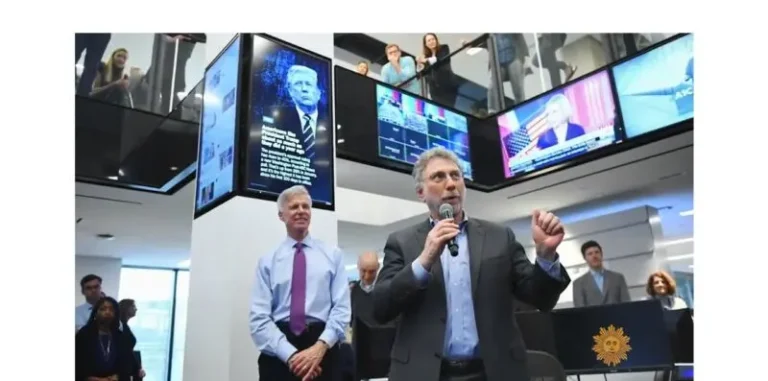You’ve done your comms audit. Now what?
7 steps on your post-assessment to-do list.
There’s a lot to do in a communications assessment: focus groups, a survey, personas, leadership interviews and a deep dive into communications channels, content and editorial process. It typically takes three months and you’re ready for a rest. No such luck.
So, what’s next? Here are seven steps to move from assessment to action.
1. Current State vs. Future State. After gathering all that quantitative data and qualitative insight, take a deep breath and exhale. In a session with the communications team, I like to review where we started and where we think we’re going.

We could write it all down and discuss it, but I like to start by drawing pictures.
This felt a little cheeseball when I first tried it about 15 years ago, but I’ve never been disappointed by the results. If I’m on site with the team, I put people in front of flip charts or white boards, with plenty of markers, and make them draw. (They are generally reluctant at first.) Working virtually, as happens more often these days, the communicators draw pictures and hold them up to the camera.
It’s not high art, but the drawings are very insightful. Here are two of my favorites. “Unclog the cascade” is the perfect illustration of what happens to messages as they move down from leaders to managers to employees.

“Relieve the churn” shows the hurricane-like effects of all the communications, with an exhausted communicator lying face down. CSI: Communications!
The Future State pictures are even more revealing: comms at the center of a circle connecting with all departments and audiences; comms flowing not just top-down, but bottom up and side to side.
Simple? Yes. Cheesy? For sure. But brilliant for capturing the true state of affairs and what we want to change.
2. What’s your headline? We are storytellers, after all, so the next step is to write a headline that gives us the overall theme of the assessment we just did. We usually write the headline and offer it up for discussion and revision. Here are a few recent ones from our work:
- “A Story that Needs Retelling” is about a brand that has great stories to convey but can’t seem to shake the “old tape” of its past.
- “On site, but out of sight” tells the story of the employees who are hard to reach because they’re still physically on the job in a digital environment that caters to hybrid and remote workers sitting in front of computers.
3. Develop your themes. These come out in our assessment report. What are the four, five or half a dozen themes that summarize what we learned in our research? Keep it high-level. Two is too few, twenty is overwhelming. And let’s be clear about the big picture: What’s working and can be made even stronger? What would work better with a few upgrades or changes? What’s broken and needs fixing, or dare I say it, could be discontinued?
4. Translate the themes into tactics. Now dig into the themes and categorize the tactics. If employees aren’t going to the intranet, how do we get them there? Better content? Something to push them there? If the cascade isn’t working, how can communicators help the managers convey those messages more consistently — and provide feedback to the leaders?
5. Prioritize the tactics. We can’t fix everything at once. Put your to-do list into three buckets:
a. Short-term. These are changes you can make quickly, in part because you have control over them. Employees aren’t reading your content? Write better headlines and post more compelling photos.
b. Mid-term. These may require some collaboration with colleagues in other departments, or with leadership, such as reconstructing a town hall, or creating a “push” vehicle to link employees to content.
c. Long-term. These changes typically involve technology, such as revamping the intranet or building a video studio. Caution: Just because they’re long term doesn’t mean they should be forgotten. Make time to develop a plan for these changes and recruit the help you need to make them happen.
6. Tell everyone. Employees don’t easily forget that you asked them to take yet another survey and participate in focus groups or one-on-one interviews to create personas. They want to know what came of it all, so tell them. Audit findings are news. You could:
a. Write a story about the findings, with graphics.
b. Have leaders talk about the assessment in a town hall and talk about what happens next.
c. Publish follow-up news whenever a change happens.
7. Be ready to measure — Wait, didn’t we just measure everything? Yes, but as you make changes, you need to do short-term measurement, like pulse surveys and instant focus groups, to gauge the effects.
a. Have you moved the needle on overall satisfaction with communications?
b. Did that revamped Town Hall resonate with the employees?
c. What do a few focus groups tell you about the new intranet?
Connect the dots
One last thing. Your leaders need to be part of this. An assessment isn’t a comms thing; it’s a company thing. It may require more resources, as in (dare I say it) hiring another person. (Just about every comms team I’ve encountered is understaffed.)
Most important, you must connect the audit findings with the business goals of your organization. We’re not writing better stories because we like to (OK, we do), but because better understanding among employees leads to more engagement, which leads to more productivity and retention.
It’s the job of the leaders to make the business succeed. Show them how better and more effective communications can help them achieve their goals.
Jim Ylisela, the co-founder of Ragan Consulting Group, loves making people draw funny pictures almost as much as he likes doing communications assessments. Is it time for you to do an audit?
Contact our client team to learn more about how we can help you with your communications. Follow RCG on LinkedIn and subscribe to our weekly newsletter here.







